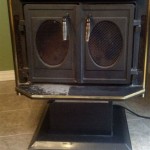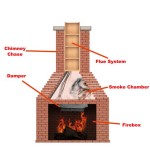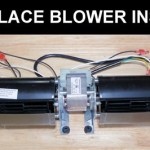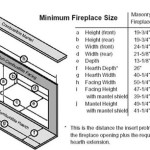Do Gas Fireplace Inserts Save Money? Analyzing the Economics of Heating
The question of whether gas fireplace inserts save money compared to other heating options is a complex one, with the answer heavily dependent on various factors. These include the existing heating system, the size and insulation quality of the home, local gas and electricity prices, usage patterns, and the efficiency of the gas fireplace insert itself. A comprehensive analysis requires considering these elements to determine whether a gas fireplace insert represents a financially sound investment.
A gas fireplace insert is essentially a sealed heating unit that is installed within an existing fireplace opening. They are designed to be more efficient and cleaner-burning than traditional open fireplaces. While open fireplaces lose a significant amount of heat up the chimney, gas fireplace inserts are engineered to radiate heat into the room, utilizing a greater percentage of the fuel consumed. This inherent efficiency is a primary reason many homeowners consider them as a supplemental or primary heating source.
The upfront cost of a gas fireplace insert, including the insert itself and professional installation, can range considerably. Factors influencing the price include the size of the insert, its features (such as remote control, thermostat, and blower fan), and its aesthetic design. Installation costs are affected by the complexity of the existing fireplace structure, any necessary modifications to gas lines or venting, and local labor rates. This initial investment must be considered when evaluating the long-term cost savings potential.
To accurately assess the potential cost savings, it is essential to compare the operating costs of a gas fireplace insert with those of the home's primary heating system. This comparison involves determining the cost per BTU (British Thermal Unit), a standard measure of heat energy, for both gas and the existing fuel source (natural gas, propane, electricity, or oil). Local utility rates fluctuate, so it is crucial to use current and accurate pricing data for a realistic comparison. For instance, if the home is heated with electricity, and the local price of electricity is significantly higher than that of natural gas, using a gas fireplace insert for supplemental heating could potentially lower overall heating expenses.
Fuel Efficiency and Heat Output
The efficiency rating of a gas fireplace insert is a critical factor in determining its cost-effectiveness. Efficiency ratings, typically expressed as a percentage, indicate how much of the fuel consumed is converted into usable heat. Higher efficiency ratings translate to less wasted fuel and lower heating costs. It is important to note the difference between steady-state efficiency and AFUE (Annual Fuel Utilization Efficiency). Steady-state efficiency is a snapshot of performance under ideal conditions, while AFUE provides a more realistic estimate of seasonal efficiency, taking into account start-up and shut-down losses. When comparing different models, AFUE is a more reliable metric.
Heat output is another crucial consideration. Gas fireplace inserts are typically rated in BTU per hour. The appropriate BTU output depends on the size of the space to be heated and the climate. An undersized insert may not adequately heat the room, while an oversized insert could lead to overheating and wasted energy. Proper sizing is crucial for maximizing both comfort and energy efficiency. Heat output should generally be estimated considering the square footage of the space and overall ambient temperature during the coldest months.
Many modern gas fireplace inserts are equipped with features designed to further enhance efficiency and comfort. Thermostats allow for precise temperature control, preventing overheating and conserving fuel. Remote controls offer convenient adjustments, allowing homeowners to tailor the heat output to their needs. Blower fans help to circulate warm air throughout the room, improving heat distribution and reducing temperature stratification. All of these features can contribute to lower energy bills and a more comfortable living environment.
Beyond fuel efficiency, the heat output of a gas fireplace insert can further impact cost savings. By using the insert to heat only the rooms that are being occupied, homeowners can reduce the load on their central heating system and lower overall energy consumption. This targeted heating approach, often referred to as zone heating, is particularly effective in homes with multiple stories or unused rooms. Strategic placement of the insert within a frequently used living space is crucial for maximizing its impact on overall heating costs.
Impact on Existing Heating System
The type of existing heating system greatly influences the potential cost savings from a gas fireplace insert. For example, homes with electric resistance heating, which is generally the most expensive form of heating, stand to benefit the most from switching to a gas-powered alternative, even for supplemental heating. Homes with more efficient central heating systems, such as modern natural gas furnaces, may see smaller but still significant savings, especially if the fireplace insert is used strategically to warm frequently occupied areas.
The age and condition of the existing heating system also play a crucial role. Older, less efficient furnaces or heat pumps consume more energy and are more likely to require repairs, making a gas fireplace insert a more attractive option for reducing overall heating costs. Regular maintenance of the existing heating system is essential for ensuring optimal performance and minimizing energy waste. Before investing in a gas fireplace insert, it is advisable to have the existing heating system inspected and tuned up to ensure it is operating efficiently.
Integration with the existing thermostat system is another consideration. Some gas fireplace inserts can be connected to the home's thermostat, allowing for automated temperature control and seamless integration with the central heating system. This integration can further optimize energy efficiency and enhance comfort. However, this type of integration typically requires professional installation and may add to the overall cost. Alternatively, smart thermostats can be used in conjunction with the existing heating system in order to optimize temperatures in conjunction with usage of the gas fireplace insert.
Long-Term Maintenance and Operating Costs
In addition to fuel costs, homeowners should factor in the long-term maintenance and operating costs associated with a gas fireplace insert. Regular maintenance is essential for ensuring optimal performance, extending the lifespan of the unit, and preventing costly repairs. This maintenance typically includes annual inspections, cleaning of the burner and venting system, and replacement of worn parts. Neglecting maintenance can lead to reduced efficiency, increased fuel consumption, and potential safety hazards.
The cost of maintenance varies depending on the model of the insert and the complexity of the venting system. Some inserts require more frequent maintenance than others, and certain parts, such as igniters and sensors, may need to be replaced periodically. It is advisable to consult the manufacturer's recommendations for maintenance schedules and procedures to ensure proper care of the unit. Furthermore, it is prudent to keep records of all maintenance and repairs for warranty purposes.
Operating costs extend beyond fuel consumption and maintenance. Gas fireplace inserts typically require a small amount of electricity to power the blower fan, thermostat, and control systems. While this electrical consumption is relatively low, it should still be considered when evaluating the overall cost of operation. The use of energy-efficient LED lighting in conjunction with the fireplace insert can help to offset this electrical consumption. Additionally, newer models often have energy saving features that minimize electrical usage when not actively heating.
Furthermore, proper venting is critical for ensuring the safe and efficient operation of a gas fireplace insert. The venting system must be properly installed and maintained to prevent the buildup of carbon monoxide, a colorless and odorless gas that can be lethal. Regular inspections of the venting system are essential for detecting any leaks or obstructions. It is also recommended to install carbon monoxide detectors in the home to provide an added layer of safety.
Ultimately, the decision of whether to invest in a gas fireplace insert to save money depends on a thorough analysis of individual circumstances. Factors such as the existing heating system, local energy prices, usage patterns, and the efficiency of the insert all play a role in determining the potential cost savings. By carefully considering these factors and comparing the operating costs of different heating options, homeowners can make an informed decision that aligns with their financial goals and comfort needs.

Fireplace Inserts Everything You Need To Know Vanderwall
Gas Fireplace Insert Install Question Hearth Com Forums Home
Can I Replace Gas Fireplace W Pellet Insert Hearth Com Forums Home

Wood Stove Insert Worth It R Woodstoving

Is A Gas Fireplace Insert Worth It Propane In Guilford County Euliss

Do Gas Fireplaces Need A Chimney Dreifuss
Wood Stove Insert Worth It R Woodstoving

Fireplaces Total Home Comfort
Related Posts








